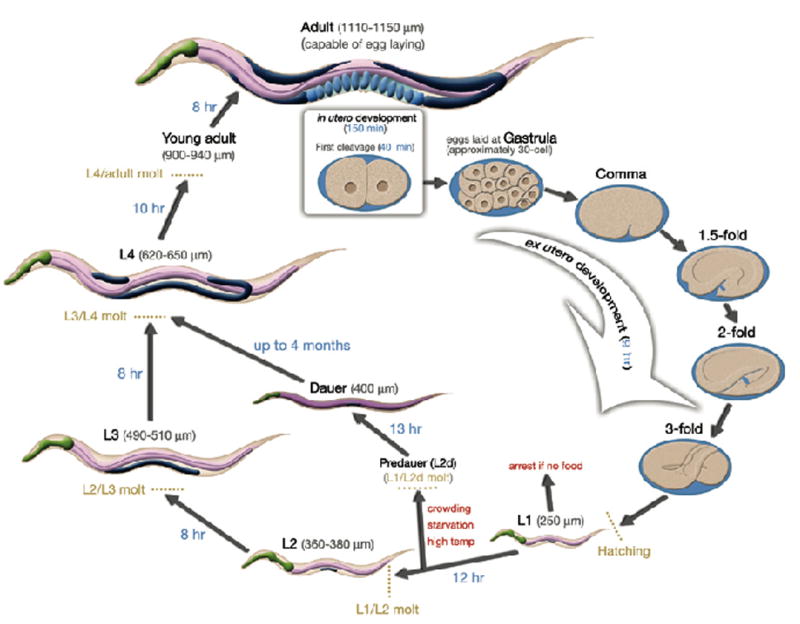Figure 4.

Life cycle of the C. elegans hermaphrodite at 22°C. An adult hermaphrodite with developing oval-shaped embryos inside is shown at the top of the life cycle. Once the embryos reach the 28–30-cell stage, they are laid into the environment and continue to develop. When embryogenesis is complete, L1 larvae hatch out of the eggshell and begin post-embryonic development in the presence of adequate nutritional sources. The animal continues larval development through the L2–L4 stages until reaching adulthood. Note the dark-colored gonad that is expanding during this time period. Prior to the L1/L2 molt, if there is a lack of food or there are too many animals or the temperature is too high then the animals will enter the alternative life cycle and become dauer larvae until these unfavorable conditions improve. The size of the animals at each stage of development is indicated in parentheses, and the amount of time spent at each stage in development is indicated along the arrows.
